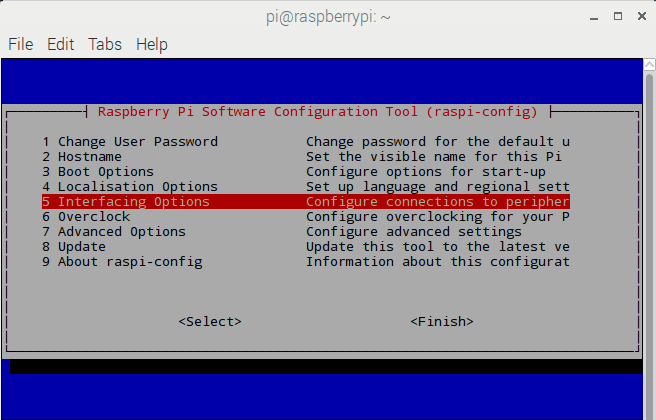

- #RASPBERRY PI USB SERIAL PORT PYTHON HOW TO#
- #RASPBERRY PI USB SERIAL PORT PYTHON MAC OS#
- #RASPBERRY PI USB SERIAL PORT PYTHON INSTALL#
- #RASPBERRY PI USB SERIAL PORT PYTHON ANDROID#
Install and launch “Serial Bluetooth Terminal” app on the phone.Ĥ-3. Listen for incoming connection on Raspberry Pi. You should be able to see something like below. On the phone, scan for Raspberry Pi and pair.

Enter below in order to be discovered from the phone. To establish a connection, Raspberry Pi and the phone need to be paired.ģ-2. ExecStartPost=/usr/bin/sdptool add SPĢ-4. Add a line below immediately after “ExecStart” line, then save and close the file. ExecStart=/usr/lib/bluetooth/bluetoothd -CĢ-3. Look for a line starts with “ExecStart” and add compatibility flag ‘-C’ at the end of the line. Open Bluetooth service configuration file. In order to use SPP, Bluetooth service needs to be restarted with ‘compatibility’ flag. Install a serial terminal application on Raspberry Pi.
#RASPBERRY PI USB SERIAL PORT PYTHON ANDROID#
The goal is to establish SPP connection between Raspberry Pi 3 and Android phone, then send/receive text using serial terminal applications on both ends. This post shows steps to set up Bluetooth Serial Port Profile (or SPP) on Raspberry Pi.

Controlling a Raspberry Pi Pico remotely using PyS.Before that I'll explore other ways of connecting and controlling the Pico from a Host.
#RASPBERRY PI USB SERIAL PORT PYTHON HOW TO#
In a future post I'll show how to do that to create a simple weather station with the Pico and plot the temperature and light level on the host. Of course in a real application you'd normally create the sender, send and receive data using a Python script. When you have finished, type s.close().The on-board LED on the Pico should turn off. The on-board LED on the Pico should turn on. If all is well, this will print the result 4. If you are running on Windows, you will need to type s = Sender('COM6') replacing COM6 by whatever port the Pico is visible on. In that directory, run python3 to start an interactive session.Copy sender.py from this github gist into an editor and save it in a directory of your choice.(line.encode('UTF8')) # the line should be echoed. rial = serial.Serial(device, baud, timeout=timeout) It uses PySerial to send commands from the host to the Raspberry Pi Pico and read the result.ĭef _init_(self, device='/dev/ttyACM0', baud=9600, timeout=1): Since you saved the program as main.py it will run on the Pico automatically. If you leave the Thonny editor open it will keep the serial port open on the host, and the serial program below will not work! Paste the code into the Thonny editor window.Open Thonny and make sure it has connected to the Pico.Install it on the Pico using the Thonny editor.#use onboard LED which is controlled by Pin 25 The blinker.py script runs on the Pico, but you should rename it to main.py. Connect the host and the Picoįirst, connect the host to the Pico using a USB data lead. The guide will also tell you how to use the Thonny editor to install the necessary code on your Pico. The £10 Guide is worth buying, but if you can't wait for your copy to arrive you can download a free pdf. You'll find instructions for MicroPython installation in the official Getting Started Guide which I reviewed recently. You'll need to install MicroPython on the Pico. You can use this technique to connect a Raspberry Pi Pico to a Jetson Nano or any other member of the Jetson family.
#RASPBERRY PI USB SERIAL PORT PYTHON MAC OS#
Setting up the host and the Picoįor this article I've used a Raspberry Pi as the host, but any computer running Windows, Linux or Mac OS will do so long as it has Python 3.5 or later installed. The statement can be any valid MicroPython code. It enables you to send a Python statement to the Pico and read the results.


 0 kommentar(er)
0 kommentar(er)
